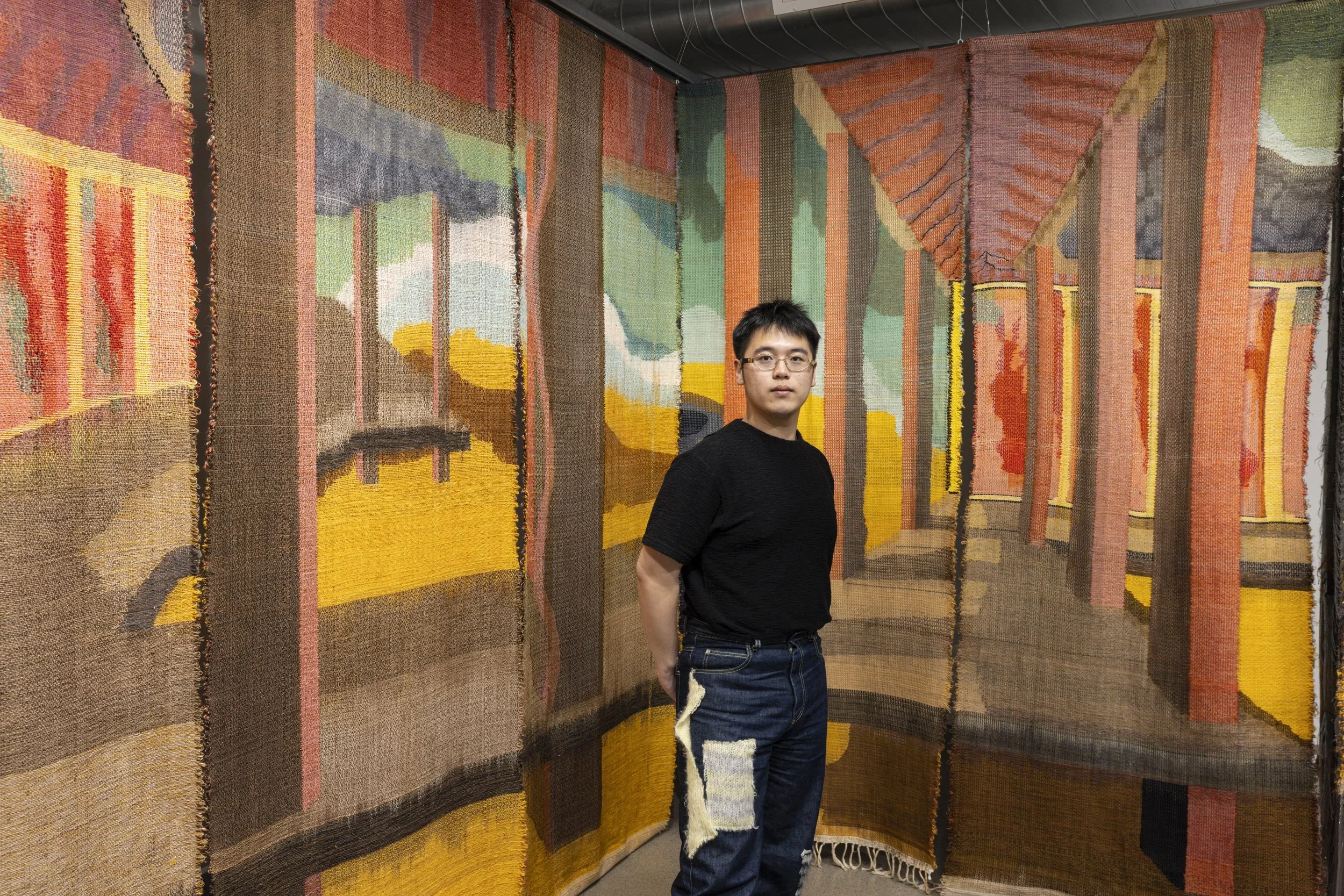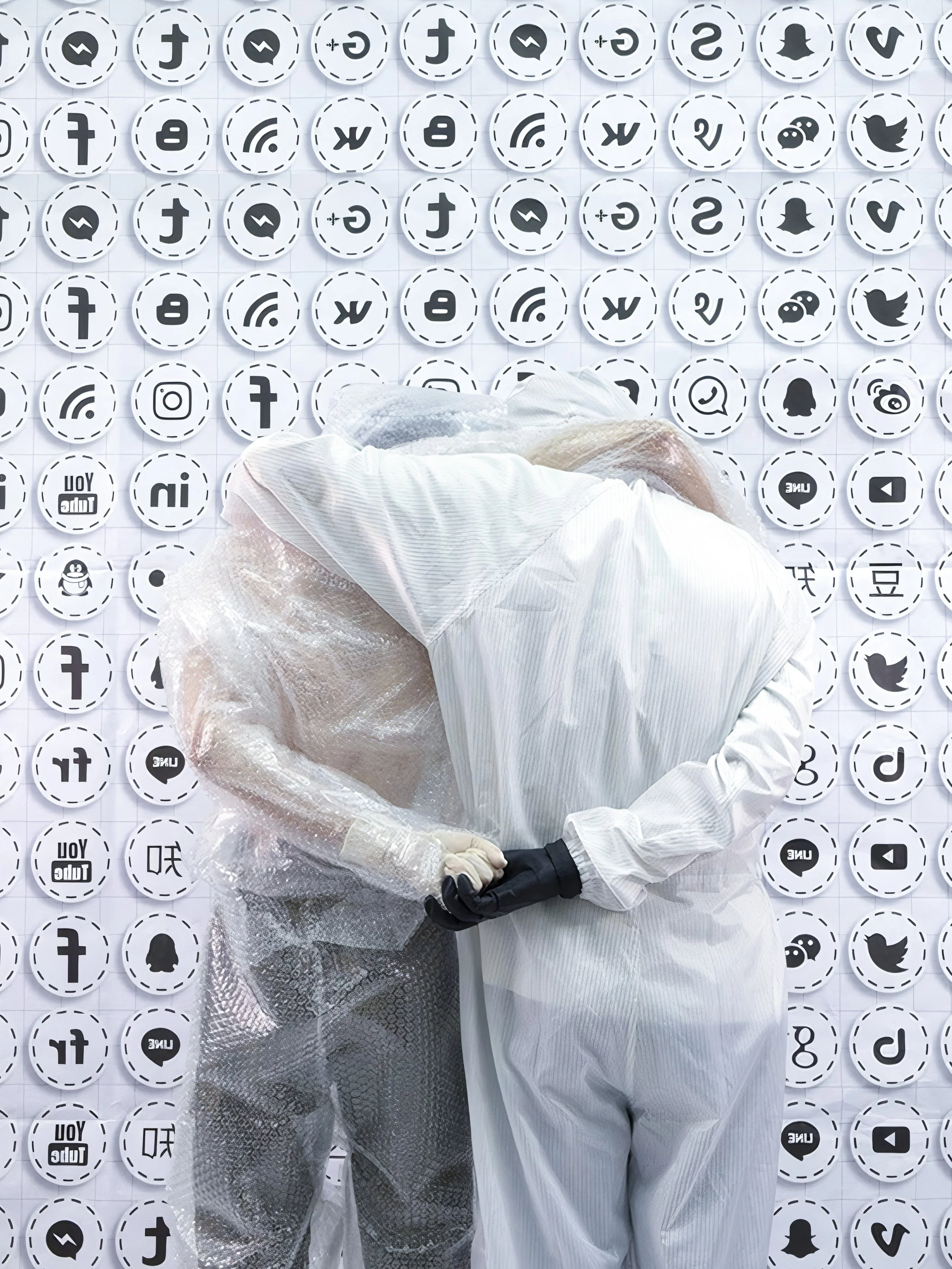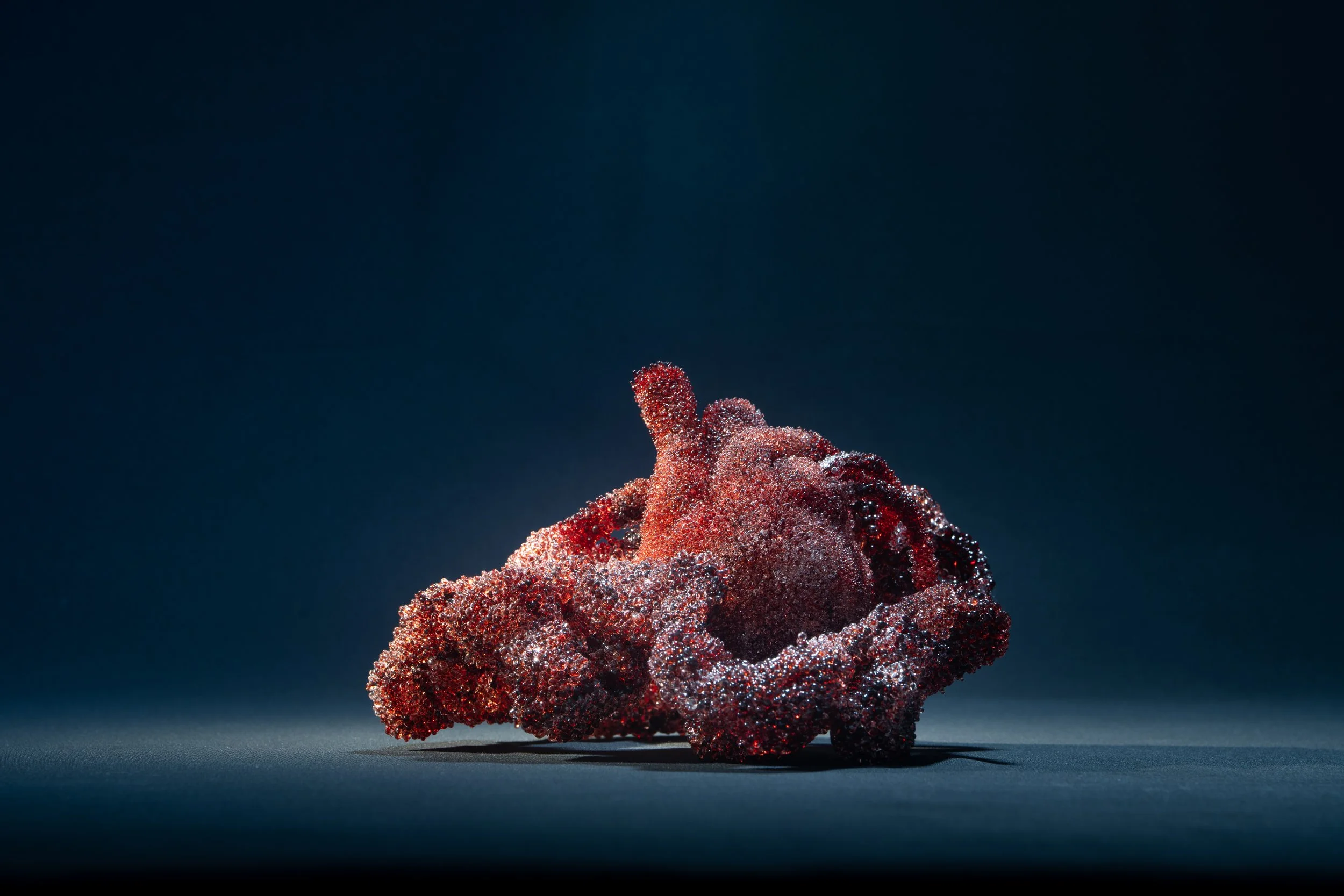8 Questions with Nick Ervinck - ORIGINAL issue
Fostering a cross-pollination between the digital and the physical, Nick Ervinck (°1981, Belgium) explores the boundaries between various media.
NICK ERVINCK (° 1981) graduated in 2003 from the KASK (Royal Academy of Fine Arts, Ghent) with a master's degree in Mixed Media. He then trained in computer modeling, sculpting and working with materials such as polyester, plaster and wood. After teaching at art academies in Tielt, Menen and Kortrijk (2004-2012), he returned to the KASK to spend three years as a visiting professor here. His work consists of large installations, handmade and 3D printed sculptures, ceramics, prints, drawings, lightboxes and animated films.
As diverse as this art production maybe, above all, he remains fascinated by the "negative space" as he discovered it with classical sculptors such as Henry Moore and Barbara Hepworth. The finding that a "hole" in the matter is such a young idea will probably haunt him for the rest of his life. As a child of his time, he plays a varying game between the physical and virtual world, using both classic and new craftsmanship (computers, 3D printing and milling). From here he explores in his own unique way classical themes such as man (with a focus on his anatomy and the emergence of cyborgs), plants (especially their genetic manipulation), masks and animals, always starting from an (art) historical background that he cuts with contemporary pop and sci-fi culture.
He has received several prizes: Prix Godecharle (2005), The Fortis Young Ones Award (2006), the Provincial Prize for Fine Arts West Flanders (2006), and the Rodenbach Fund Award (2008). In 2013 Ervinck also won the prestigious Merit CODA Award for his art integration IMAGROD.
In 2009 Ervinck was praised for WARSUBEC, a monumental project created for the Zebrastraat cultural site in Ghent. Many public and private assignments also followed, including EGNOABER, Emmen; IMAGROD, Ostend; REWAUTAL, Sotogrande; LUCE, Amersfoort; TSENABO, Tielt; and WIBIETOE, Anderlecht. In 2009 he moved to an old car workshop and transformed it into an artist's studio. He founded Studio Nick Ervinck in 2011.
His work has been acquired by art collectors around the world and shown in solo and group exhibitions at NRW-Forum Düsseldorf; Ars Electronics, Linz; MARTa, Herford; Paul Valéry Museum, Sète; Fenaille Museum, Rodez; Laboral, Gijon; Museum Beelden aan Zee, Scheveningen; Bozar, Brussels; Brakke Grond, Amsterdam; S.M.A.K., Ghent; Gallo-Roman Museum, Tongeren; Museum Dr. Guislain, Ghent; Vanhaerents Art Collection, Brussels; Museum M, Leuven; the Museum of Fine Arts, Ghent and the Middelheim Museum, Antwerp.
Outside Europe, Ervinck took his first steps with group exhibitions in UNArt Center, Shanghai; MOCA, Shanghai; Axiom, Tokyo; Oya Stone Mine, Tokyo; Northern Arizona University Art Museum, Flagstaff and Chamber, New York. In 2019, at the request of the City Council of St. Petersburg, Florida, he was commissioned to create a public sculpture in bronze, OLNETOPIA. In 2020, he was asked by the Chinese government to create ALUNIK for the Shenzhen World Conventions & Exhibition Center in Shanghai. In 2021, a large solo museum exhibition is planned for him in Häme Castle organized by the National Museum of Finland. In addition to some 50 works inside and outside, a new monumental installation will also be presented here. A voluminous monograph will also be published in response to this exhibition.
Nick Ervinck lives in Lichtervelde with his wife Kaat and their three children, Lene, Ida and Thor.
Interviewed by Mohamed Benhadj.
NOITERIS, 2016 - 2018 print 200 x 150 cm, framed 156 x 206 cm 78,7 x 59,1 inches,
framed 61.4 x 81.1 inches, Nick Ervinck©
INTERVIEW
Your work explores the aesthetic potential of sculpture, 3D prints installation, architecture, and design. How do you process from sketching your ideas to presenting a final sculptural project? What makes your work so unique expression?
I always played between the physical and virtual worlds. From lego cubs to computer games. From ceramic to 3D animations. To make a smooth sphere is very easy in a digital world but very complicated in the physical world. To put your fingermarks in clay is very easy in the physical world but very complex ore just an imitation in the ComputerWorld. From classical craftsmanship to new digital craftsmanship (3D design, 3D printing, 3D scanning, drilling, lasering). I want to make in the virtual world art that I could impossibly make in the physical world. And to make art in the physical world that I would impossibly be able to make in the virtual world. To push and challenge the limits of both worlds.
In a previous generation, a sculpture had to think of an idea in his head. Has to put his 3D dimensional idea on a 2D paper. Has to put this 2D paper idea back on a physical scale model to work to a bigger model. This is a complex system. Today I design immediately in a virtual world. I create and think immediately in 3D. I’m able to imagen and design sculptures that are much more complex than what my mind could imagen. By saving, working, copy, paste, you can design things beyond your imagination.
My manual sculptures feed my digital sculpture, and my digital sculpture feeds my manual work. There is always a dialogue between my workshop and my virtual sketches? Sometimes I start without any sketch directly in a block foam ore clay. In other cases, I have a perfect virtual design that I translate to a physical sculpture from 5cm to 15m high. I studied how artist like Michelangelo worked, how a 3D printer worked, and that worked out my techniques.
I see myself as one of the last artist standing with one foot in the old world and one foot in the new world. I just grew up on the write time to build up this mix between classical working in clay, plaster, pencil, and all these new techniques of 3D printing and 3D scanning.
Because I love art(history), but as a child of my time growing up with comics, sci-fi moves, pop culture, pushing the limitation of the world today, I believe I found a unique style to develop further in the next decades.
What do you find most challenging about using new technologies?
Last year I worked together with Stratasys that build a new printer that can print transparency and full color. It is mind-blowing. All these new possibilities, It let you dream of the world of tomorrow. Because now you can imagen sculpture inside a sculpture. You can have a control that would never be possible in glass blowing. So because of this new technology, it challenges me to think of a sculpture of tomorrow. To design sculptures that are maybe not possible to make today but will be soon.
TANARAMPAN, 2017 - 2019 print, 240 x 185 cm 94,5 x 72,8 inches, Nick Ervinck©
Can you give an example of an artwork that you have made that you feel especially successful?
There are so many. For example, IKRAUSIM, 2009, was inspired by the cut out rocks in the Chinese temple gardens but also on the negative space used in sculptures from Henry Moore and Barbara Hepworth. It was my first 3D print that also exists as a 3D animation. The sculpture feels small. But the 3D animation from the inside of the sculptures feels like walking in big caves.
IKRAUSIM, 2009 Nick Ervinck©
IKRAUSIM, 2009 Nick Ervinck©
In the same year, I made AGRIEBORZ, 2009, that took almost 2000 manual drawing hours in the virtual world to design—inspired by the medical work of Prof. Dr. Pierre Delaere. Later inspired on the strawberry patent of Prof. Ton De Nys, I created my mutated strawberry sculpture with a link to the Meissen porcelain. And recently, I started making my cyborg sculpture with influence to the classical Greek and roman bustle but also to the Inca and Maya culture. I have the feeling I created a sculpture that would no be possible to make in the past. And pushing the history of sculpture.
Your sculptures at first appear light, with colors and details, but looking deeper into the details and forms, they begin to seem sophisticated and look like alive creatures. How would you describe the duality of these for our readers?
I use bright colors, mostly yellow, and due to the organic shapes. They feel charming sculptures. But when you look closer, they also have a more monster feeling and deeper layers.
What architectures inspire you?
When I just graduated, I was bored with the sculpture. I saw no evolution at that time. I went back to my first love architecture. The architects Zaha Hadid, Gregg Lynn, were working with computers and big teams making a new visual language. I founded architecture much more innovative. It is with 3D printing that I found my way back into sculpture. Today, I am inspired by sculptures like Henry Moore and Barbara Hepworth.
KOROBS, Nick Ervinck©
Today, the world is facing the pandemic COVID-19. As an artist under Coronavirus lockdown, What is a typical day like for you? How do you continue doing your art under these circumstances?
The first week I have to admit that I was feeling down. Because of the lockdown, my team has to stay at home. Almost all my project got postponed. The near future is very unclear and scarry today.
But then your passion and creative mind retake control. My typical day is getting awake around 7:30 am. My girls of 3 and 6 are already sitting in front of the TV, making their breakfast. I Give my son (6 months) and wife a kiss. Then, I go downstairs to my studio and workshop. One day doing my emails, administration, working on new books and proposals, another day working in small and big clay drawings in the workshop.
NOITEROS, 2017 - 2019 aquarel, marker, pastel pencil, print 80 x 60 cm, framed 93 x 73 cm 31.5 x 23.6 inches, framed 36.6 x 28.7 inches, Nick Ervinck©
Do you have any upcoming shows or collaborations?
Today I am working for a public commission for St Petersburg, Florida, USA, and two sculptures for the Chinese government. Next year I will have my biggest show until now in Häme Castle organized by the National Museum of Finland. I will show 50 pieces inside, three outdoor sculptures, and a big new installation. Together with this show, there will be a new big monography about my work. I look forward to this. We worked from deadline to deadline to get this show ready. The advance is that because of Corona, the show is postponed, and everything is now prepared and packed a long time in advance. Further, I’m working on a show in Belgium, The Netherlands, France, Ireland, China. You can find the program on my website.
Nick Ervinck, can I visit your studio?
Yes, of course. I am happy to invite you to my studio and give you a view of my world.


























